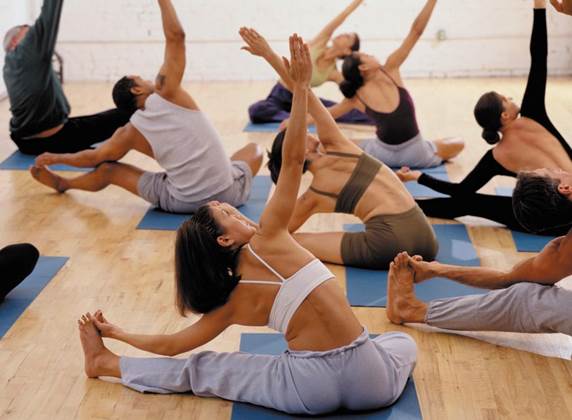Rather than relying on your teacher
for answers, empower your practice by learning to find the answers within.
As a long-time yoga student and former yoga
teacher, I've had many important instructors guiding me along my yogic path.
Some come and some go, but one thing remains the same: when you lose a
much-loved teacher, the transition can be hard.
About two years ago, I was in yogic heaven.
My mentor, EmmaTaylor from Sydney's Essence of Yoga, was it. She was kind,
compassionate, skilled, funny and deeply committed to yoga-all the elements
that I appreciated beyond the two or three hours a week I spent in her classes.
Then, whammy. She had a baby and I didn't see her for almost a year.

About
two years ago, I was in yogic heaven.
Was I excited for her? Of course. As for my
practice, that's another story- what would it be without my teacher? I soon
realized her leaving (albeit, temporarily) was a chance to reflect on one of
the less explored aspects of a long-term commitment to yoga. History and modern
practice appear to encourage us to follow a teacher, but the skill of letting
go can be a yogic practice in itself.
Loosen the ties
Kamala Angel is a long-time practitioner,
teacher and student of the Sivananda Yoga tradition. She values the
teacher-student relationship, but her connection is also guided by a deep
understanding of yogic philosophy. "If we want to learn anything, we go to
a teacher... but in essence, the role of the teacher (or guru or master) is to
continually turn the mind of the student within," she says. "For
students, this is a process of gradual detachment and deepening bliss, as they
come closer to the experience of the Self. Emotional attachment to the teacher
runs counter to that."
She adds: "A true teacher needs to be
vigilant, and gently but firmly discourage all emotional attachment to
themselves. Eventually the student will experience the teacher and Self as
one." My teacher certainly wasn't encouraging attachment, but that didn't
mean I wasn't feeling attached. And there's the rub. In the West, we tend to
look for a teacher we admire, but to really develop our experience of yoga (the
yoga that is union, rather than simply the ability to stand on our head), we
need to see the teacher as the same as our infinitely flawed selves. "The
difficulty is people see themselves as separate and the teacher as separate.
The teacher is actually the Self who is within," Angel says.

"For
students, this is a process of gradual detachment and deepening bliss, as they
come closer to the experience of the Self. Emotional attachment to the teacher
runs counter to that."
In a nutshell, according to yoga, you and your
wise, inspiring, compassionate teacher are the same. The teacher is a guide who
can help you, but their role is to push the learning back inside. "We
think we learn yoga through our intellect, but we can't," continues Angel.
"Yoga is beyond intellect; it's through self-enquiry and the process of
[asking} `who am I?' that we go into silence."
Finding “the one”
With this food for thought, I 'fess up to
Taylor about my own attachment. I know that her relationship with her own
teachers is an important part of her life and wonder how she made the
transition to being more self-sufficient. "After several years of
practicing yoga, I still had a strong sense that I was on a journey searching
for my teacher, but I also felt that when that meeting happened it would be
profound and life-changing," she reveals.
It was. When Taylor found Iyengar yoga
teachers Margaret and Glenn Ceresoli, she knew the encounter would he
transformational for her spiritual practice and personal life. "A number
of synchronistic events suggested that I was being strongly guided on the right
path," recalls Taylor.
"I immediately resonated with my
teachers' words and felt incredibly happy, relieved and grateful that this
pivotal encounter had taken place. It was like coming home. I had read that
everyone will meet a teacher who acts as a signpost pointing them in the right
direction, and that's what it felt like for me-there was an instant
heart-to-heart connection."

In
a nutshell, according to yoga, you and your wise, inspiring, compassionate
teacher are the same.
What attracted Taylor to her teachers went
well beyond the physical practice. "While my teachers had incredible
technical knowledge, what really left an impression was how, despite all the
media and hype around yoga, they quietly conducted their lives, and
authentically lived and breathed the teachings," she says. For Taylor, new
motherhood meant a long break from the regular classes, workshops and retreats
she'd undertaken with her valued teachers. "When I reflected on the
classes I had attended, my teachers' words were always suggesting that the
solutions lay within. Everything was pointing back to the inner teacher. I was
being given the tools to trust this innate knowledge and reconnect with myself,
rather than look outside for the answers," she says.